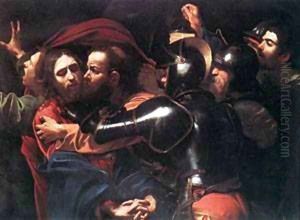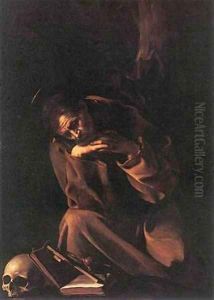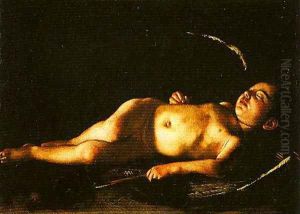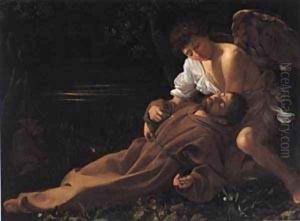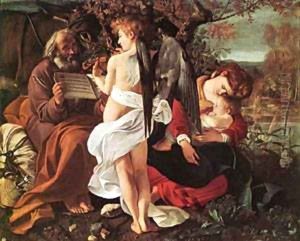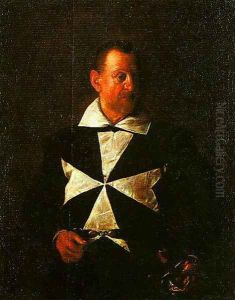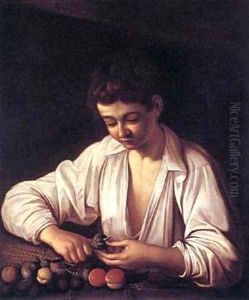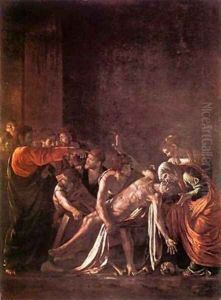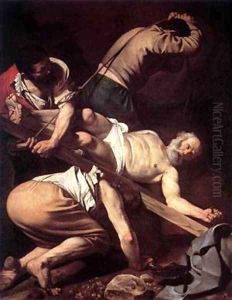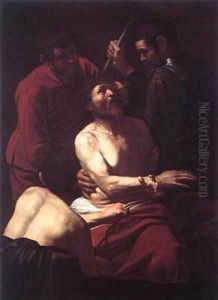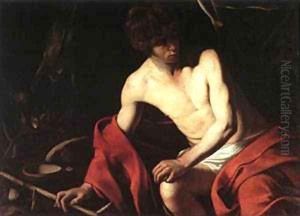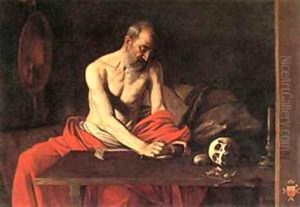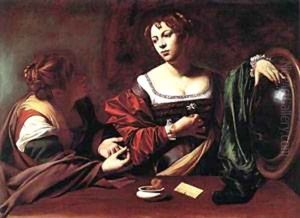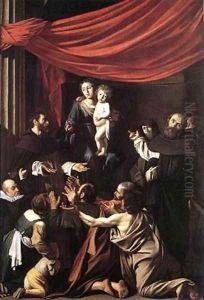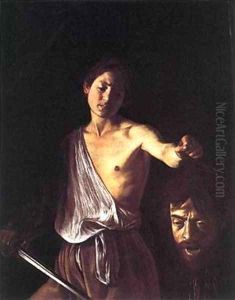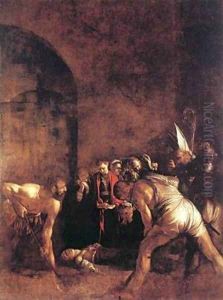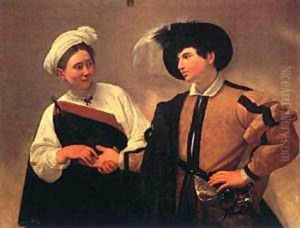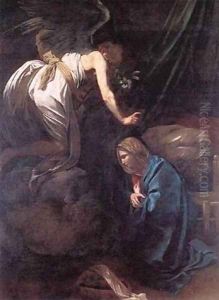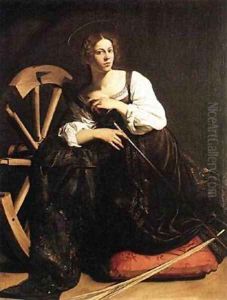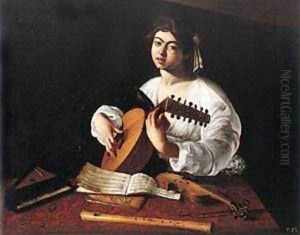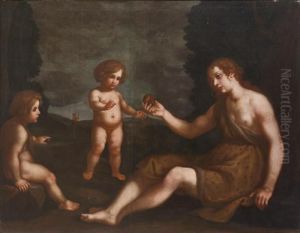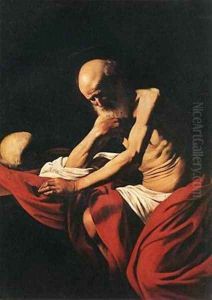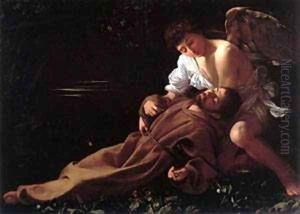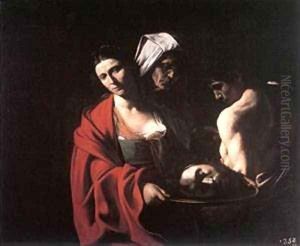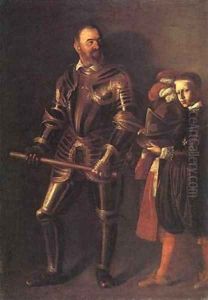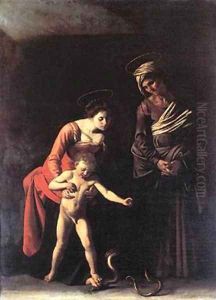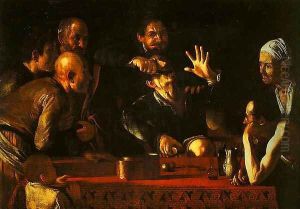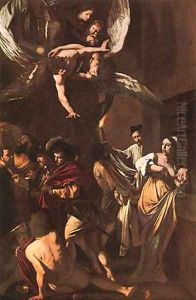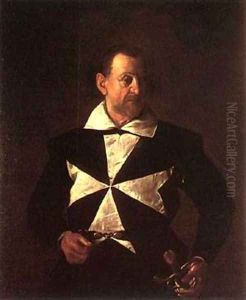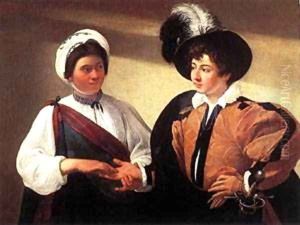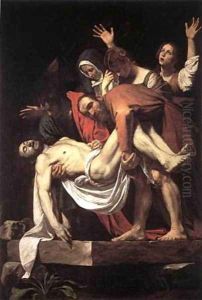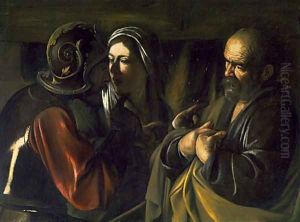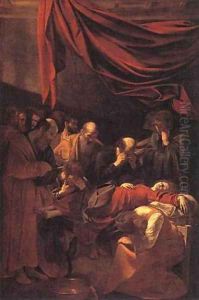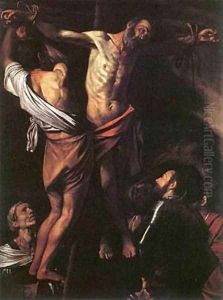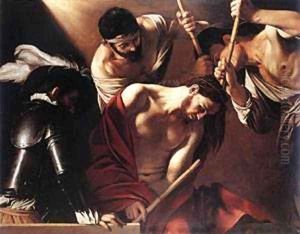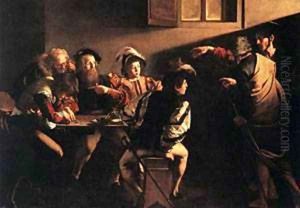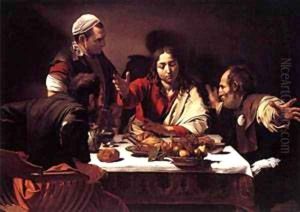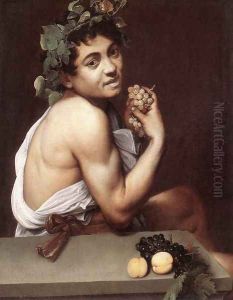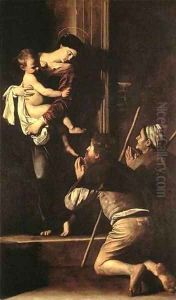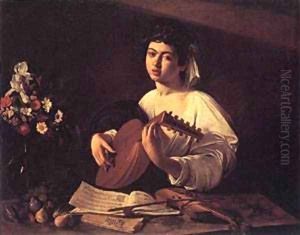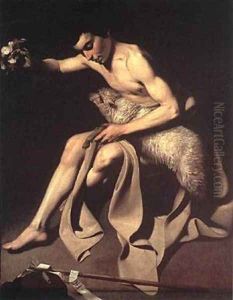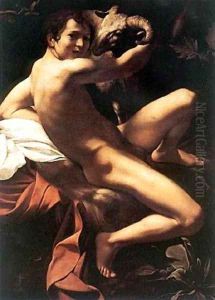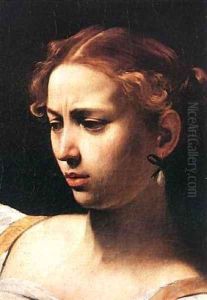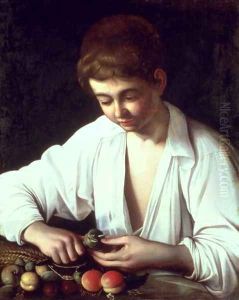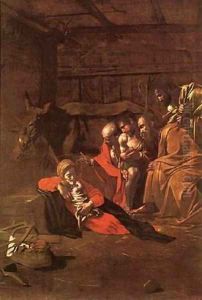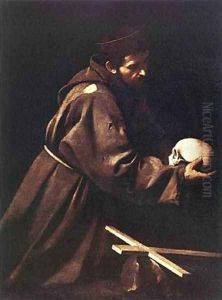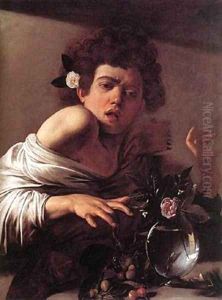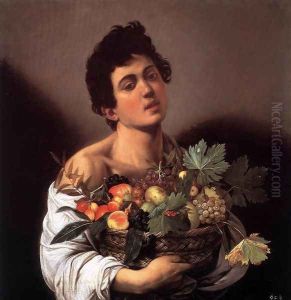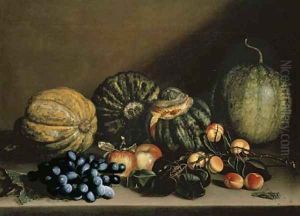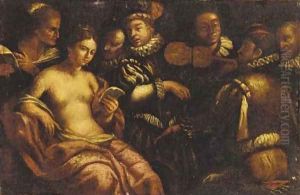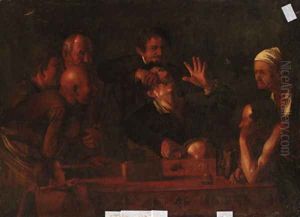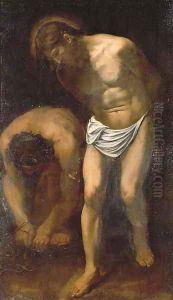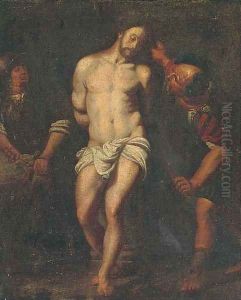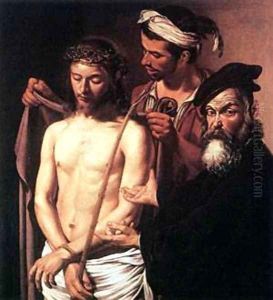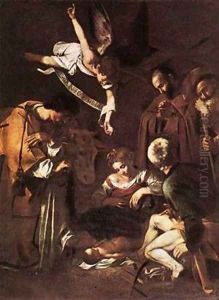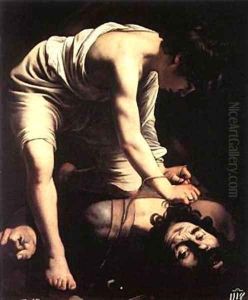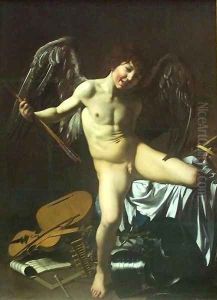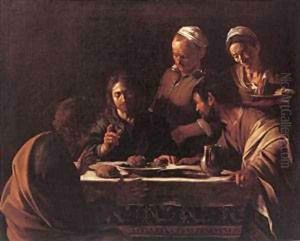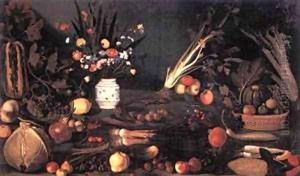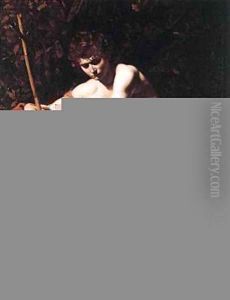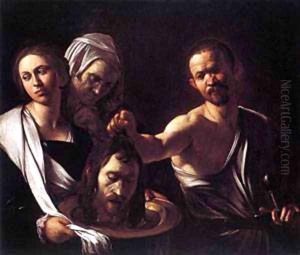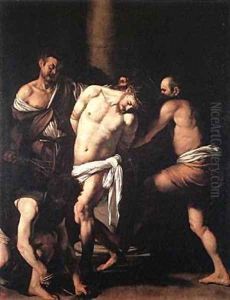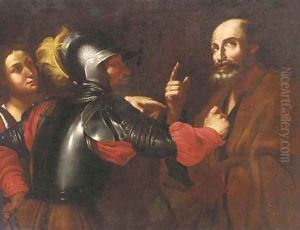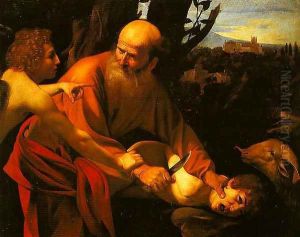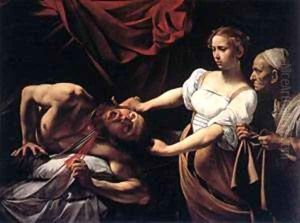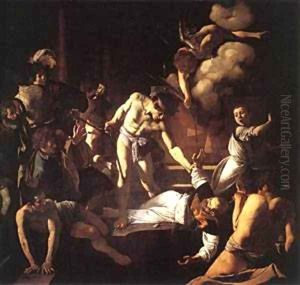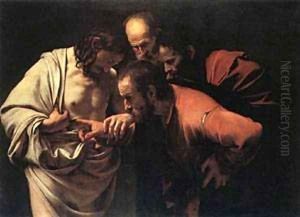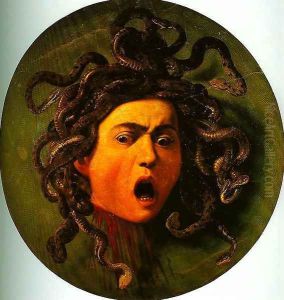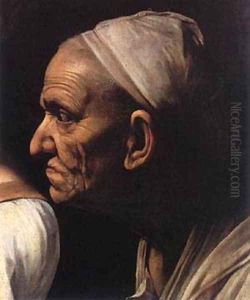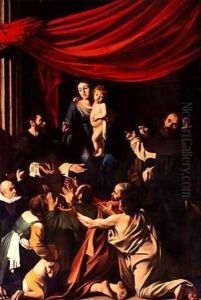Michelangelo Merisi Da Caravaggio Paintings
Michelangelo Merisi da Caravaggio, known simply as Caravaggio, was a revolutionary figure in Western art and is considered one of the pioneers of the Baroque period. Born in Milan, Italy, in 1571, to a family with connections to the Sforzas, a noble family, and the Colonnas, a powerful Roman family, Caravaggio was orphaned at a young age and trained as a painter in Milan before moving to Rome in his early twenties.
Rome during the late 16th century was a vibrant but highly competitive artistic hub. Caravaggio initially struggled for recognition but his fortunes changed with the patronage of Cardinal Francesco Maria Del Monte. His innovative use of chiaroscuro – a technique that uses strong contrasts between light and dark to achieve a sense of volume and depth – and his dramatic, realistic approach to Biblical and mythological scenes marked a departure from the mannered style of the time.
Caravaggio's masterpieces include 'The Calling of Saint Matthew', 'Judith Beheading Holofernes', 'The Supper at Emmaus', and 'David with the Head of Goliath', among others. His works are characterized by their emotional intensity, stark human realism, and the use of ordinary people as models for religious figures. His style had a profound influence on subsequent generations of artists, including the likes of Rembrandt and Rubens.
Despite his professional success, Caravaggio's personal life was tumultuous and often violent. He was involved in numerous brawls and skirmishes, one of which led to the death of a young man in 1606 and Caravaggio's subsequent flight from Rome to avoid a murder charge. He spent his final years moving between Naples, Malta, and Sicily, continuing to paint and receive commissions but also continuing to encounter trouble with the law. His last known work is 'The Martyrdom of Saint Ursula'.
Caravaggio's death in 1610 is shrouded in mystery, with theories ranging from murder to a fever contracted while on the run. He was only 38 years old. His influence, however, endures, and his work is seen as a precursor to the Baroque style that would dominate the next century. Caravaggio's legacy is that of a master storyteller with a brush, whose work brought a new level of emotional realism to painting.
